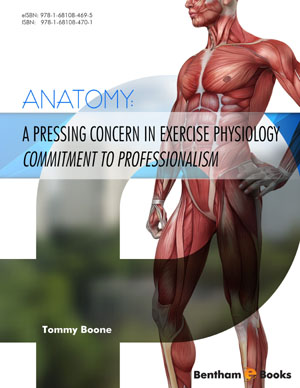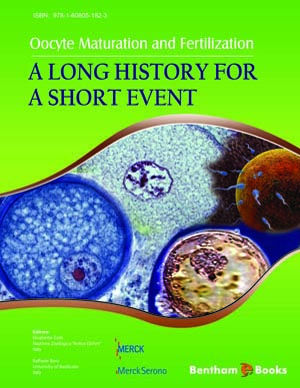Book Volume 1
Hormesis and Adaptation
Page: 3-37 (35)
Author: Marios Kyriazis
DOI: 10.2174/9781681083353116010004
PDF Price: $30
Abstract
Our biological response to external challenges frequently obeys hormetic principles. During the phenomenon of hormesis, mild stressful challenges may upregulate defence and repair pathways, with a subsequent overall improvement in function. It is important to highlight that hormesis is a dose-response, non-linear phenomenon, meaning that a low dose of a stressor can result in benefit whereas a higher dose may result in damage. Hormesis is invoked when the challenge is of sufficient magnitude and appropriate quality as to satisfy the definition of ‘novelty’. Routine and monotony do not, as a rule, invoke a hormetic response. In this chapter I will discuss certain characteristics of hormesis as applied to humans, and examine several situations whereby an adequately-timed stimulus may be of practical health benefit. The assessment and response to the new challenge leads to adaptation and thus, eventually, improvement of function within a particular environment (the environment where the challenges have originated from). In this way, there is a direct link between external challenging information and internal physical or biological changes. This link will be explored in detail, both in this chapter and in other chapters of this book.
Vitagenes and Hormetins: The Pills of Hormesis
Page: 38-70 (33)
Author: Marios Kyriazis
DOI: 10.2174/9781681083353116010005
PDF Price: $30
Abstract
In the previous chapter I discussed the physiological basis of hormesis and given examples of how certain practical actions can have a hormetic benefit upon our health. Here I will examine examples of oral drugs, compounds or supplements which may exhibit a hormetic effect. These compounds are called hormetins and many of these act on vitagenes, genes which encode transcription factors that are necessary for maintaining health. Thus, I explore a direct link between information carried by chemical compounds, and physiological modulation, with resulting health improvement. Some of these hormetins are pluripotent agents, exhibiting benefits at multiple levels and tissues. Other compounds are mimics of hormetic physical actions such as calorie restriction and exercise. I will also discuss the phenomenon of xenohormesis, i.e. hormetic gains experienced by humans through hormetins which originate from a different species. The discussion here complements both the concept of hormesis and that of Environmental Enrichment which will be discussed in the next chapter, and the aim is to provide a comprehensive approach ensuring a better understanding of hormetic mechanisms in a wider sense.
Environmental Enrichment: General Concepts and Research
Page: 71-98 (28)
Author: Marios Kyriazis
DOI: 10.2174/9781681083353116010006
PDF Price: $30
Abstract
The environment plays a huge role both during ageing and in relation to the phenomenon of hormesis. In this chapter I discuss the impact of any stressful stimuli or challenges originating from our environment, and expand the concept of hormesis to take into account the environment in a wider sense. An enriched environment is taken to mean an ‘information-rich’ habitat, including the immediate surroundings of an organism. In the case of humans, these surroundings include not only the physical aspects such as towns, natural landscapes and weather, but also social and virtual elements such as online environments and digital relationships. The discussion lays the foundations for understanding how enriched environments act as vehicles of information which lead to biological modifications. These biological modifications may then participate in a novel evolutionary event, which is the emergence of technoculture, an amalgam of biology and technology. It would be unthinkable to consider human ageing without referring to these new technological developments. Speculative elements such the notion of the ‘noeme’ (a biological- digital entity), empirical research, emerging research and other concepts are discussed within a mutuallyinfluencing landscape, with the emphasis being on the biology of human ageing
Epigenetic Regulation and Adaptation to Stimuli
Page: 99-120 (22)
Author: Marios Kyriazis
DOI: 10.2174/9781681083353116010007
PDF Price: $30
Abstract
Changes and variations to physiological traits which are caused by environmental factors are studied by the science of epigenetics. This sub-section of genetics describes alterations in transcription which may result in different phenotypes depending on the influence of the environment. The study of epigenetic mechanisms is very relevant in ageing and, in particular, in situations involving external challenges and exposure to novel information. In this chapter, I will discuss some elements related to epigenetic regulation as applied to situations where humans are exposed to ‘positive challenges’ which aim to up-regulate somatic repair mechanisms. The role of epigenetic factors, including non-coding RNAs (such as microRNAs) will also be discussed in the context of an information-rich environment. In addition, I will explore certain principles (such as the Condition-Action rule) which are relevant to the operation of the adaptation mechanisms, and some mechanisms which govern the process of information assimilation by the cell. The underlying theme, which will also be explored in the following chapters, is the consideration of mechanisms that may result in reallocation of repair resources from the germ line back to the soma. Overall, the aim is to highlight factors, processes and principles which depend on the environment and may be involved in human health improvement.
A ‘War of Trade-offs’ Between the Soma and the Germ Line
Page: 121-141 (21)
Author: Marios Kyriazis
DOI: 10.2174/9781681083353116010008
PDF Price: $30
Abstract
In nature there is always a fierce competition for resources. This is particularly relevant during the process of ageing, where there is canalisation of repair resources; these tend to flow from the somatic tissue towards the germ line, in order to assure the survival of the species. In the early periods of phylogenetic development there was a time when repair of germ line cells became more efficient compared to the repair of somatic cells. The level of somatic repair became just sufficient to ensure that the organism reached sexual maturity. We are now looking for evidence that this could be changing, that we may be witnessing a phase transition from effective germ line repair to an effective somatic repair. Here, I consider mechanisms of fidelitypreservation which may be present in the germ line, and examine the possibility that these may be made to operate upon somatic cells instead. Mechanisms which safeguard the reliability of germ line repair and ensure robustness/resilience in the germ line may also (or instead) be applicable upon somatic material (cells, molecules, and other factors) and safeguard a continually-effective repair of this somatic material. Relentless hormetic challenges from the environment guarantee that the flow of information remains operational and it persistently fuels the ability to repair the soma. Apart from germ line cells, some unicellular organisms such as certain bacteria maintain their ability for ongoing repairs (at least for some considerable time, albeit not indefinitely), a fact that indicates that, in principle, senescence is not unavoidable. Thus the ability to repair and maintain somatic organic material within biological systems is not entirely lost.
Another Dimension: ‘Zooming Out’
Page: 142-168 (27)
Author: Marios Kyriazis
DOI: 10.2174/9781681083353116010009
PDF Price: $30
Abstract
The quest to find effective therapies aimed at chronic age-related degeneration has deep and wide ramifications. It is not sufficient to examine physical or pharmacological interventions which may have an impact on the process. Instead, we also need to consider more profound evolutionary principles which underpin the process of ageing. One example is the principle of degeneracy which may be useful in explaining how we may attain similar functions by using different structures. Another example is hysteresis, which examines dependence on already established conditions - a crucial obstacle we need to overcome in the quest to diminish chronic degeneration. This chapter will be an exploration of certain evolutionary and philosophical principles, such as a contemplation of the meaning of life, which complement the biological and medical ones. Concepts relating to resilience, complexity and self-organisation, as well as a discussion of certain cybernetic principles (such as path-dependency and nudging), all taken together will provide a suitable and realistic framework for achieving our aim: to manipulate nature in a way that diminishes the impact of age-related degeneration, and reduces mortality as a function of age.
Energy, Entropy and Complexity: Thermodynamic and Information-Theoretic Perspectives on Ageing
Page: 169-200 (32)
Author: Atanu Chatterjee
DOI: 10.2174/9781681083353116010010
PDF Price: $30
Abstract
The human body is a complex system. It has a natural ability to grow and develop over time, as well as adapt to the frequent changes in the surroundings. The complexity associated with it and the various processes it undergoes lie in its structure and functionality. Complex chemical reactions play a central role in the evolution of structure and organization of this complex adaptive system, which are inherently directed along the paths of maximum entropy production. Entropy production causes a system to degrade itself by the gradual consumption of free-energy to a more thermodynamically-stable state. However, the human body, and open systems in general, have a tendency to preserve or increase order and complexity with time. This phenomenon of spontaneous appearance of order is known as self-organization. Thus, the human body has a structure and several underlying functions that give rise to organization. Simultaneously, it prevents the destruction of this state of organization by self-organizing itself with time. In the following chapter, we will look into the details of (self) organization from a physical and an information perspective, in order to see the relationship between complexity and the growth in organization of a system with time. Further, understanding the concept of (self) organization from a functional perspective is also important as it will allow us to relate metabolic reaction-sets to structural symmetry, metabolites to interacting nodes, and mapping these interactions into complex networks. Finally, our aim will be to relate ageing to the loss of energy, information, organization and functionality of the human body with time.
Engagement with a Technological Environment for Ongoing Homoeostasis Maintenance
Page: 201-233 (33)
Author: Marios Kyriazis
DOI: 10.2174/9781681083353116010011
PDF Price: $30
Abstract
Emerging empirical and theoretical thinking about human ageing places considerable value upon the role of the environment as a major factor which can promote prolonged healthy longevity. Our contemporary, ‘information-rich’ environment is taken to mean not merely the actual physical surroundings of a person but it is also considered in a more abstract sense, to denote cultural, societal and technological influences. This modern environment is far from being static or stable. In fact, it is continually changing in an exponential manner, necessitating constant adaptive responses on behalf of our developmental and evolutionary mechanisms. In the previous chapters we have presented our views about these adaptive responses and mechanisms. Here, I will describe in some more detail these and related mechanisms of how a continual, balanced and meaningful exposure to a stimulating environment, including exposure to ‘information-that-requires-action’ (but NOT trivial information), has direct or indirect repercussions on several factors (mostly epigenetic) which may then act to prolong healthy longevity. Information gained from our environment acts as a hormetic stimulus which up-regulates biological responses and feedback loops, eventually leading to improved repair of age-related damage. The consequence of this up-regulated information-processing systems may influence resource allocation and redress the imbalance between somatic cell versus germ-line cell repairs. This can eventually have evolutionary consequences resulting in the drastic reduction of agerelated disease and degeneration.
Introduction
Age-related degeneration may be reduced or even eliminated, by positively challenging the human being, physically or cognitively, to up-regulate somatic repair functions. Exposure to meaningful information and a challenging environment act as hormetic stressors which, in the context of an increasingly technological setting, may invoke evolutionary mechanisms that lead to a persistent maintenance of homeostasis. Thus, there is a strong link between environmental factors and ongoing health, leading to an individual’s ability to continually adapt to age related challenges. Challenging Ageing: The Anti-senescence Effects of Hormesis, Environmental Enrichment, and Information Exposure explains the role of hormesis in anti-aging processes followed by information on vitagenes, epigenetics, environmental enrichment and germlines. The monograph also brings newer concepts and theories to the fore, such as ‘environmental enrichment’ and ‘technoculture.’ Medical professionals and general readers, alike, will gain a a new perspective on the processes that counter aging processes in the human being.












